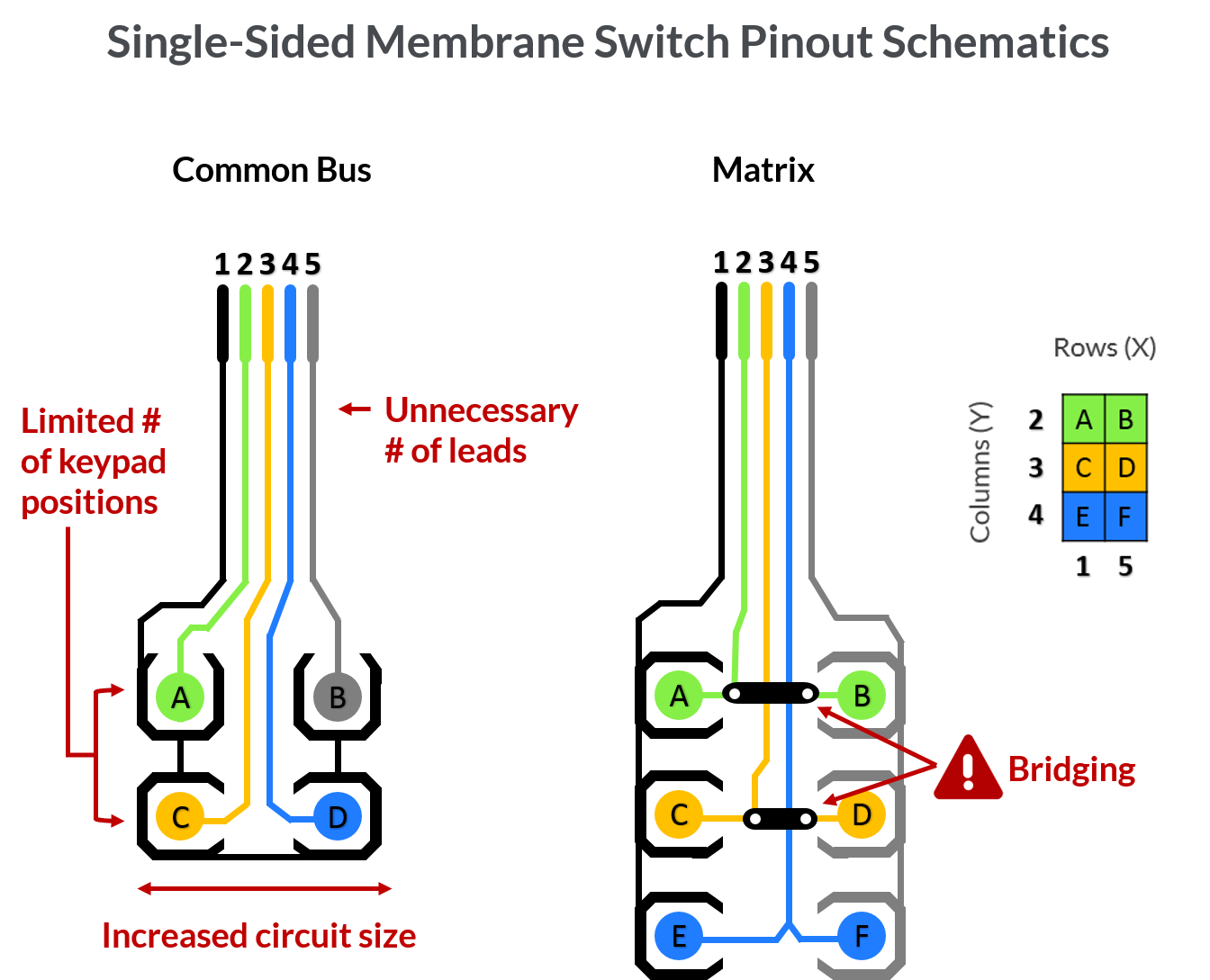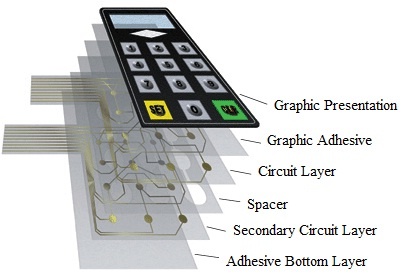The Manufacturing Refine Behind Membrane Layer Switch Over: What You Need to Know
The production process behind membrane layer changes combines mindful design, product selection, and quality assurance. It starts with understanding the details of membrane button design and proceeds through numerous stages, consisting of material options and printing techniques. Each stage plays a vital duty in guaranteeing functionality and toughness. The intricacies of layer construction and the extensive screening criteria may expose understandings that are not instantly evident. What exists past these foundational elements?
Understanding Membrane Layer Switch Over Style
Although membrane buttons may appear simple in the beginning glimpse, their layout entails intricate considerations that ensure performance and longevity. The style procedure starts with a thorough understanding of user requirements, including the interface's intended application and ecological factors. Functional designs is a crucial element, as the design should help with ease of use while ensuring that responsive feedback satisfies user expectations.Moreover, the layering of components, such as visuals overlays, glue layers, and conductive traces, have to be specifically engineered. membrane switch. This split arrangement not just influences the switch's responsiveness but additionally affects its durability. Interest is offered to the sealing strategies utilized to safeguard against dampness and dirt, which might compromise performance. In addition, style considerations extend to aesthetics, where color pattern and visual quality boost individual experience. Ultimately, the layout of membrane switches equilibriums functionality, individual experience, and longevity, ensuring that they fulfill the demands of various applications properly
Products Used in Membrane Layer Change Manufacturing
When choosing materials for membrane layer switch production, it is vital to contemplate both efficiency and toughness. The primary products consist of polyester and polycarbonate films, which give versatility and toughness. These films are frequently covered with adhesive to assure appropriate bonding to substratums. Conductive inks, usually made up of silver or carbon, are critical for producing electric connections within the button, allowing for trustworthy operation.Additionally, a safety layer, such as a hard layer, is often put on enhance scratch resistance and long life. The choice of backing material, such as acrylic or foam, can substantially impact the button's responsive feel and total user experience. Additionally, various ecological variables, consisting of temperature and moisture, should assist product option to guarantee peak performance in particular applications. Eventually, the ideal mix of products adds to the membrane layer switch's performance and life expectancy, making notified options crucial for manufacturers.
The Printing Process: Creating Video and Text
The printing procedure in membrane switch manufacturing plays a considerable function in creating premium graphics and message. Different graphic layout techniques are employed to guarantee visual appeal and functionality, while mindful ink option approaches are crucial for sturdiness and performance. Understanding these elements is basic for attaining ideal lead to membrane button layout.
Graphic Design Techniques
Graphic layout methods play a vital role in the printing procedure of membrane layer buttons, as they define just how graphics and text will ultimately show up on the end product. Efficient visuals design includes the critical use of designs, shades, and fonts to enhance readability and aesthetic charm. Designers usually use vector graphics for scalability, ensuring that pictures remain sharp at different sizes. In addition, attention to comparison and alignment is important, as it affects user communication and visual quality. The incorporation of branding elements, such as logo designs, should be managed with like preserve brand name honesty. In general, thoughtful visuals design methods add substantially to the functionality and appearance of membrane layer buttons, impacting customer experience and product performance.
Ink Option Methods
Choosing the proper ink is important for accomplishing the wanted aesthetic top quality and toughness in membrane layer button production. Various ink types are used, including solvent-based, water-based, and UV-curable inks. Each kind offers unique attributes, such as attachment, adaptability, and resistance to ecological aspects. Solvent-based inks are usually preferred for their longevity and vibrant shades, while water-based inks are extra environmentally pleasant yet might have restrictions in bond. UV-curable inks supply fast curing and robust performance. Additionally, shade matching strategies ensure that the chosen inks align with design specifications. Eventually, the option of ink need to think about elements such as application method, substratum compatibility, and end-use demands to accomplish exceptional lead to membrane layer button graphics and message.
Layer Building and Assembly

Product Option Refine
A careful selection of products is vital in the manufacturing process of membrane layer switches, as it directly influences functionality and sturdiness. The main products made use of consist of polyester, polycarbonate, and numerous conductive inks. Polyester is commonly preferred for its excellent resistance to chemicals and abrasion, making it suitable for extreme settings. Polycarbonate, on the other hand, supplies exceptional quality and influence resistance, which is valuable for applications calling for presence and toughness. Conductive inks, usually composed of silver or carbon, are vital for producing reliable electric paths. Furthermore, the option of sticky materials impacts the overall honesty of the button - membrane switch. Examining elements such as environmental direct exposure, responsive comments, and aesthetic needs guides producers in picking the most effective products for their particular applications
Layer Adhesion Strategies
Adhering layers in membrane button building is an essential process that ensures performance and longevity. Numerous bond methods are employed to protect perfect bonding in between layers, which typically consist of the use of adhesives, heat, and stress. Pressure-sensitive adhesives (PSAs) are typically used for their ease of application and instant bonding abilities. In addition, thermal bonding methods can be used, where warm is used to trigger glue buildings, protecting a solid bond. The option of bond method mainly depends on the materials entailed and the particular application demands of the membrane layer switch. Appropriate placement and consistent application of adhesives are necessary to avoid flaws, securing the switch runs properly throughout its intended life have a peek at this site expectancy.
Quality Control Steps
Guaranteeing quality assurance throughout the layer building and setting up of membrane layer switches is important for maintaining performance and reliability. This process typically includes a number of critical procedures, consisting of comprehensive assessments at each phase of manufacturing. Manufacturers use sophisticated screening approaches, such as peel examinations and adhesion assessments, to verify the stability of layer bonds. Furthermore, aesthetic assessments are performed to recognize any problems in printing or material variances. Ecological problems, such as temperature level and moisture, are thoroughly monitored to guarantee perfect curing and bond. In addition, normal calibration of devices assists preserve accurate manufacturing standards. By carrying out these quality assurance steps, producers can significantly reduce the risk of item failure, ensuring that the final membrane layer switches over satisfy the required specifications and consumer expectations.
Evaluating and Quality Control Actions

Advancements in Membrane Switch Modern Technology
As improvements in innovation continue to evolve, membrane layer buttons are taking advantage of cutting-edge growths that enhance their capability and individual experience. One noteworthy technology is the combination of capacitive touch technology, which permits more user-friendly and responsive user interfaces. This look at more info shift not just boosts appearances however additionally minimizes mechanical wear and tear, prolonging the life expectancy of the switches.Additionally, innovations in graphic overlay materials have caused enhanced resilience and resistance to environmental elements such as dampness and UV light. These products now provide improved clearness and illumination, additional boosting the aesthetic appeal.Furthermore, the incorporation of clever technology is changing membrane switches over right into interactive control board, enabling connection with IoT devices. This connection cultivates a smooth customer experience, leading the way for applications in numerous markets, from medical care to consumer electronic devices. Collectively, these advancements position membrane layer switches over as vital parts in modern-day device style.
Regularly Asked Questions
The length of time Does the Membrane Change Manufacturing Process Take?
The period of the membrane layer button production procedure can differ considerably. Factors such as complexity, materials utilized, and production volume influence timelines, with normal manufacturing varying from a couple of days to numerous weeks for conclusion.
What Are the Usual Applications for Membrane Buttons?
Membrane layer buttons are generally made use of in numerous sectors, consisting of vehicle controls, household appliances, clinical tools, and customer electronic devices (membrane switch). Their convenience and durability make them ideal for applications requiring user-friendly user interfaces and trusted efficiency in varied atmospheres
Can Membrane Layer Changes Be Personalized for Particular Needs?

What Is the Lifespan of a Regular Membrane Switch?
The life expectancy of a normal membrane layer button varies, however typically, it varies from 1 to 5 million cycles. Factors such as usage, atmosphere, and material top quality greatly influence resilience and general efficiency gradually.

Are Membrane Switches Eco-friendly?
The ecological kindness of membrane switches varies. Some products made use of may not be recyclable, while others can be environment-friendly. The general impact depends on manufacturing materials and techniques, necessitating mindful factor to consider throughout choice and disposal. The manufacturing procedure behind membrane layer switches combines careful layout, material selection, and quality control. It begins with recognizing the details of membrane layer switch design and advances with different stages, consisting of material selections and printing techniques. When picking products for membrane layer button production, it is crucial to contemplate both efficiency and sturdiness. A cautious option of materials is vital in the manufacturing process of membrane switches, as it straight affects performance and longevity. The choice of attachment approach largely depends on the products included and the particular application demands of the membrane button.